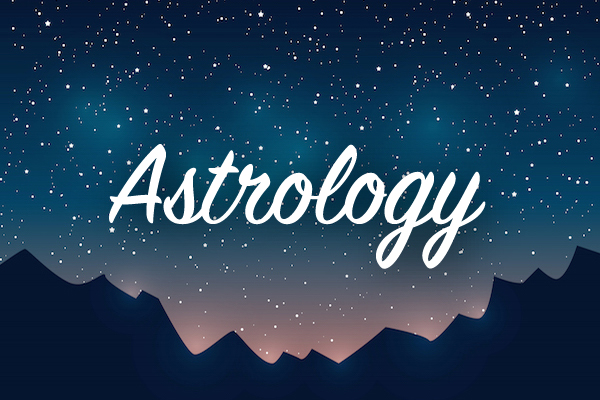The Glycemic Index of a sweetener is a comparative measurement of glucose released over a two-to-three hour period. For individuals who are diabetic, on a low-carbohydrate diet, or for other reasons mindful of keeping their blood sugar stable, being aware of the glycemic index of sweeteners and all foods is especially relevant. When trying to observe a low-glycemic diet there is more depth to the practice than just the “GI” or glycemic index, there is also the “GL” Glycemic Load. For those who aren’t concerned about keeping stable blood sugar levels, there are many reasons to consider doing so. Erratic blood sugar levels are taxing to all the body systems and can be the basis of many mental, emotional, and physical disorders.
Source on Glycemic Index:
http://www.organiclifestylemagazine.com/blog/healthy-sugar-alternatives.php
http://www.mendosa.com/gilists.htm
Candida overgrowth and its many physiological detriments are another consideration for sweetener choice. All forms of raw and refined cane and beet sugar, honey, molasses, agave, rapadura, brown rice syrup are all off-limits for anti-Candida diets. Some sweeteners that don’t feed Candida are stevia, xylitol, and yacon root. All three have a low-glycemic index. Xylitol is birch sugar. Be aware of the corn version of this sweetener that is often not organic and is genetically-modified.
Refined cane sugar in all of its different forms, white, brown, and powdered are all void of any nutritional value and have been linked to countless health problems including: negative effects on mineral balance in the body, depression of the immune system, hyperactivity, anxiety, reduction in defense of bacterial infections, notable rise in triglycerides, difficulty concentrating, moodiness, mineral deficiency, weakened eyesight, and arthritis.
The best choice if you have to pick sugar as a sweetener is UN-refined raw sugar, since it at least retains some minerals and other nutrients. A challenging issue with this choice is finding a source that is truly unrefined.
Sources for more on Sugar:
http://www.greenlivingtips.com/articles/73/1/White-sugar-vs-raw-sugar.html
http://www.veghealthguide.com/sugar-sweeteners/
http://www.healingcancernaturally.com/sugar-health-effects-risks.html
http://www.foodrenegade.com/will-the-real-raw-sugar-please-stand-up/
Stevia, a sweet herb in the Sunflower family, has been a top choice for diabetics because has a negligible effect on blood sugar. For this reason, it is also a top choice for any other person who is on a carbohydrate-controlled diet or for any other reason mindful of managing their glucose levels. There are other purported medical benefits of Stevia but even more possible health concerns. There are three main topics of health concerns regarding studies done with Stevia: reproductive problems, energy metabolism, and cancer.
Source for more on Stevia:
http://safety.lovetoknow.com/Dangers_of_Stevia
High-fructose corn syrup has been heavily marketed by the Corn Refiners Association as a “natural and as safe as sugar when used in moderation”. That statement has fallen under heavy scrutiny. HFCS is associated with obesity in children and adults, and many other health detriments. Because it is metabolized by the liver, fructose does not cause the normal release of insulin from the pancreas. Fructose converts more readily into fat than any other sugar. HFCS is an especially concentrated form of fructose, so it is believed that any of the effects of fructose are multiplied by the use of HFCS as opposed to basic fructose (a “double-whammy” effect). They believe the conversion of fructose into fat is one of the key reasons why as HFCS finds its way into more and more food staples, Americans continue to get fatter. Also, fructose causes a significant rise in serum triglycerides and the creation of blood clots. If you are avoiding HFCS, be aware that because so many consumers are growing keen to its potential dangers, manufacturers are now trying to start listing it as “corn sugar” in the ingredients of products.
Agave has become a common choice for a natural sweetener. Now its place in the natural sweetener world has come into widespread question, mostly because of an article written by Dr. Mercola earlier this year. One of the claims he made was that agave’s fructose content is between 70-97%, which he compared to that of HFCS as 55%, deducing that agave is worse than HFCS. There are two links below to read more details about Dr. Mercola’s article, and another article that offers responses to his concerns, including a quote from the original Mercola article that states that some sources of agave create a final agave product that has closer to 55% fructose content. It seems that one thing both ends of the argument agree upon is that the main factor in determining the fructose content of agave is the source.
If you are eating agave in foods that already mixed into products when you buy them, you will not be sure of the source or the fructose percentage. This highlights again a theme of green living- know your source.
http://www.gnosischocolate.com/agave-report/
Raw honey is one of the most natural choices for a sweetener because there is very little processing that occurs from honeycomb to jar. Honey has been purported to have a higher glycemic index than some of the other choices, but this again depends on the source. It could be anywhere from 30-78 depending on the type and source.
Fresh fruit takes the cake for the most unrefined sweetener. It, like honey, has been listed as having a high glycemic index, but when glycemic load is considered the numbers are lower. One thing to consider when using fresh fruit as a sweetener is that since it is digested quicker than most other foods, combining it with other foods can create challenging digestive problems including cramping, gas, and loose bowel movements. Also from the perspective of sugar addiction and candida, fruit sugar could still fuel both. Figuring out your own fruit sugar tolerance and effects on blood sugar, after cleansing and working out addiction issues is critical to its’ re-entry into your diet.
This is just a general overview of the vast topic of sweeteners. A consideration not covered here are the environmental impacts of the production of each sweetener. There are benefits and drawbacks to the sweetener choices that are too many to list here, as well as sweetener options not listed. Thoroughly check out the general information and information specific to your circumstances before making a choice. Overall, the most important factors are quantity, regularity of consumption, and source. Occasional intake of any sweeteners is unlikely to cause many problems. It is the daily, regular, and cumulative intake that creates the most problems with any sweetener choice. Many people are consumed with the question of what the best sweetener choice is. A better question to ask may be, why do we need to eat so much sweetener?
~ Annie Botticelli - Sedona, Arizona
Source on sugar addiction:
http://www.globalhealingcenter.com/refined-sugar-the-sweetest-poison-of-all.html





